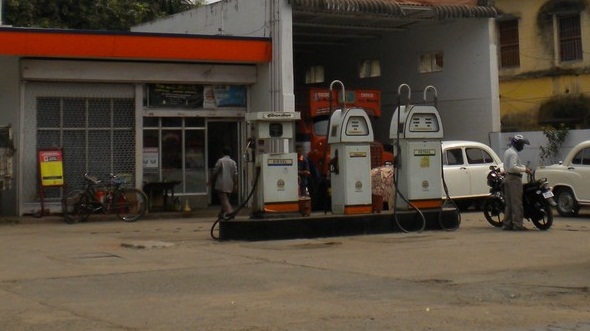This problem is more common than you would think. What with modern diesel engines being quite silent and some older petrol engines sounding like diesels? Many cars these days don’t even have many external badges to distinguish them and the poor fuel pump attendants often make mistakes.
There are plenty horror stories of how car engines can get totally wrecked because of the wrong fuel choice. Imagine this: You are in a hurry, you pull in at a fuel station, ask for fuel not specifying what you want and then dash off only to realize that the fuel filled was the wrong one. What do you do?

Modern diesel engines are really sensitive to fuel quality and putting petrol in a diesel car can ruin a lot of things quite quickly. Similarly, high precision petrol engines will choke up if fed a diet of diesel. If you realize your mistake soon enough, you can bring things under control. Here’s how:
Symptoms of diesel in a petrol car
What can go wrong if you put diesel in a petrol car? Diesel is a heavier fuel than petrol and also more oily. The first part that gets affected is the fuel filter, which will tend to clog up quite quickly as diesel is relatively more oily. That itself should begin to make your car stutter and stall. The second part to get affected would be the spark plugs, which will foul up with soot build up because of the diesel mixed with petrol. Your car will emit lots of white smoke as well and lose power before it stalls completely.
Symptoms of petrol in a diesel car
Diesel engines though are not as forgiving as petrol engines. Putting petrol in a diesel car can lead to even more expensive damage, because in diesel engines, there are parts like the fuel injection pump that depend on the diesel’s lubrication properties to run smoothly. And then there are rubber seals that don’t like the high cleaning, drying properties of petrol as well. However, for a diesel engine to even begin to start showing signs of wrong fuel, it takes quite a while. Initially, there is black smoke due to unburnt fuel, then sluggishness and stalling. It will refuse to start after that.
What to do if you’ve put in the wrong fuel?
The first thing you should do if you’ve realized that you’ve put in the wrong fuel is not run the car. Next disconnect the main fuel line from the engine to the tank. If you can access the tank using a hose through the filler cap, do that and syphon off as much fuel as possible. Drain the rest through the main fuel line. You will need to get a mechanic to do this for you.
Crank the engine a few times by turning the key to pump out any remaining fuel. Let the fuel drain out of the main fuel line as the engine cranks (it won’t start). Then fill in about two litres of the proper fuel and crank the engine to clean up the lines, before connecting the fuel line back. Then top-up the tank using the correct fuel and add an additive to clean the injectors.
In a petrol car you will need to change the fuel filter and clean the spark plugs. With a diesel vehicle, open the drain plug at the bottom of the filter and drain out any fuel in the filter as well. Then prime the vehicle using the manual diesel pump and start it.
SOURCE:





